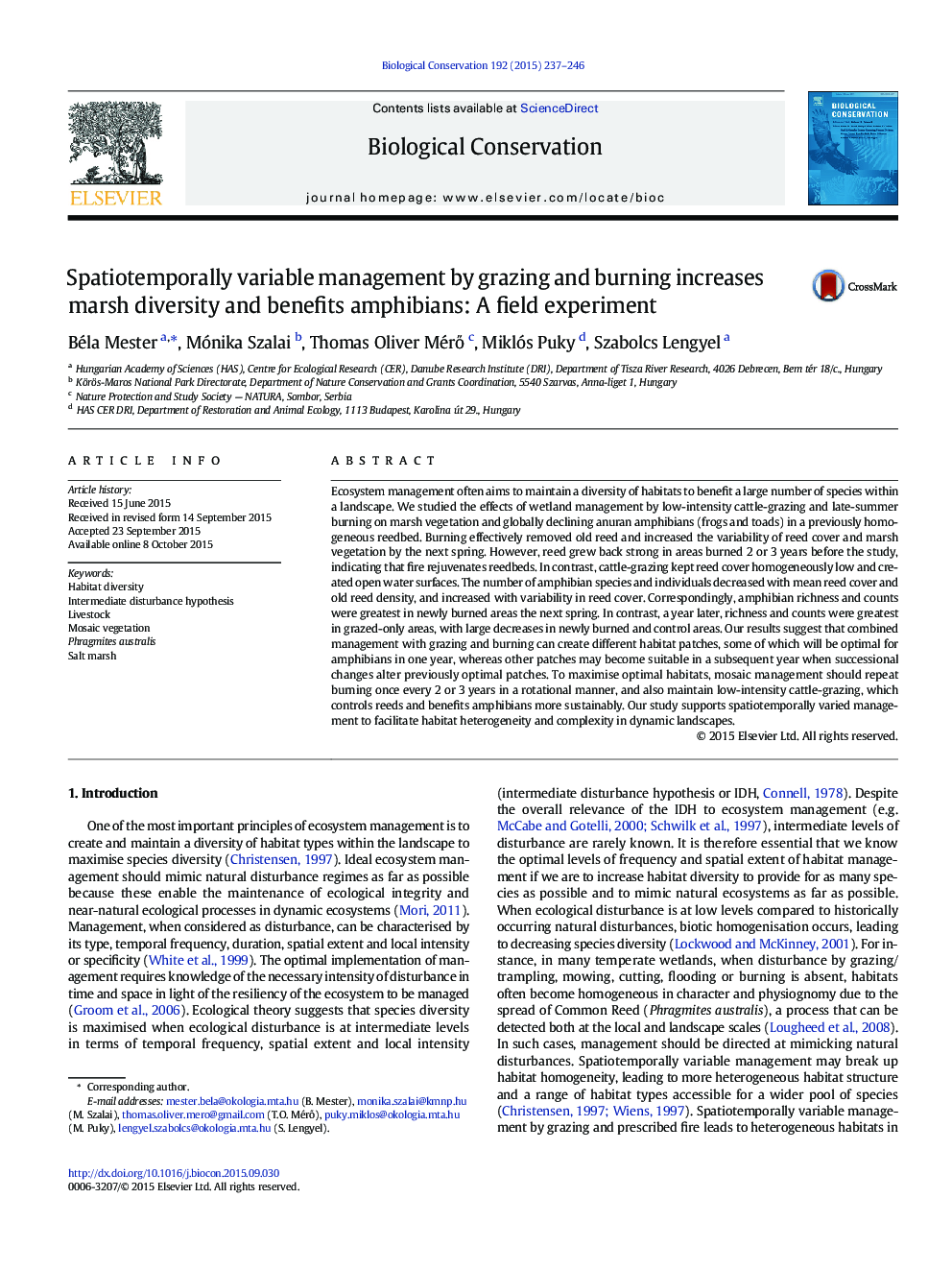| کد مقاله | کد نشریه | سال انتشار | مقاله انگلیسی | نسخه تمام متن |
|---|---|---|---|---|
| 6298580 | 1617909 | 2015 | 10 صفحه PDF | دانلود رایگان |
- We managed a wetland to mimic historical wildfires and traditional cattle grazing.
- Early autumn fire eliminated old reed but facilitated reed regrowth the next summer.
- Frogs and toads preferred newly burned areas but avoided old-burned patches.
- Grazing broke up reedbeds and created shallow open water preferred by amphibians.
- Mosaic management increased habitat diversity and greatly benefitted amphibians.
Ecosystem management often aims to maintain a diversity of habitats to benefit a large number of species within a landscape. We studied the effects of wetland management by low-intensity cattle-grazing and late-summer burning on marsh vegetation and globally declining anuran amphibians (frogs and toads) in a previously homogeneous reedbed. Burning effectively removed old reed and increased the variability of reed cover and marsh vegetation by the next spring. However, reed grew back strong in areas burned 2 or 3Â years before the study, indicating that fire rejuvenates reedbeds. In contrast, cattle-grazing kept reed cover homogeneously low and created open water surfaces. The number of amphibian species and individuals decreased with mean reed cover and old reed density, and increased with variability in reed cover. Correspondingly, amphibian richness and counts were greatest in newly burned areas the next spring. In contrast, a year later, richness and counts were greatest in grazed-only areas, with large decreases in newly burned and control areas. Our results suggest that combined management with grazing and burning can create different habitat patches, some of which will be optimal for amphibians in one year, whereas other patches may become suitable in a subsequent year when successional changes alter previously optimal patches. To maximise optimal habitats, mosaic management should repeat burning once every 2 or 3Â years in a rotational manner, and also maintain low-intensity cattle-grazing, which controls reeds and benefits amphibians more sustainably. Our study supports spatiotemporally varied management to facilitate habitat heterogeneity and complexity in dynamic landscapes.
Journal: Biological Conservation - Volume 192, December 2015, Pages 237-246
